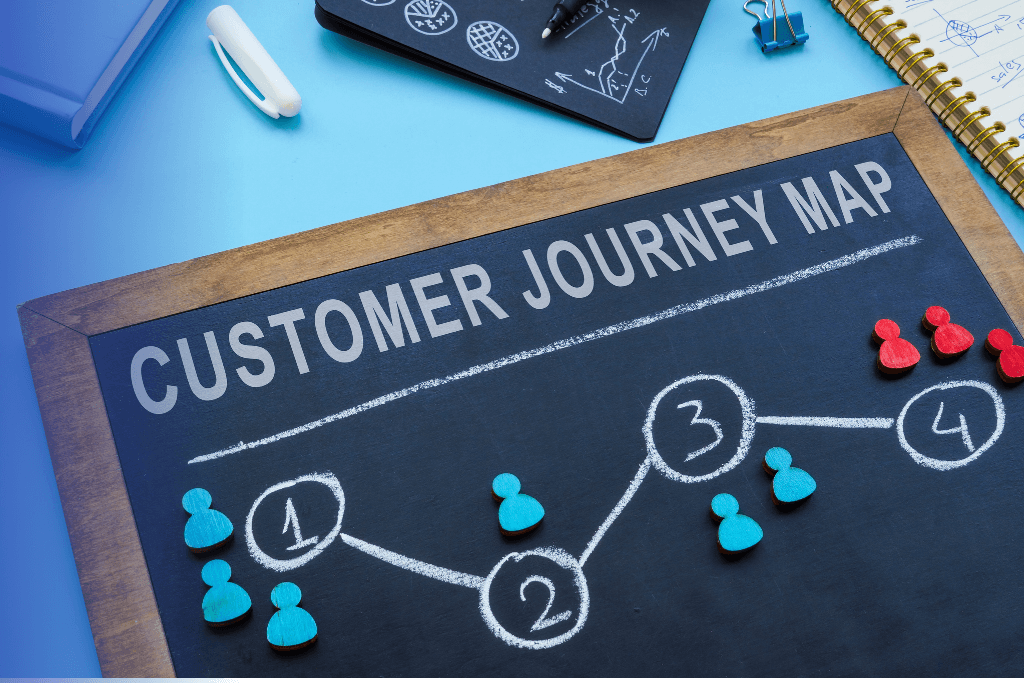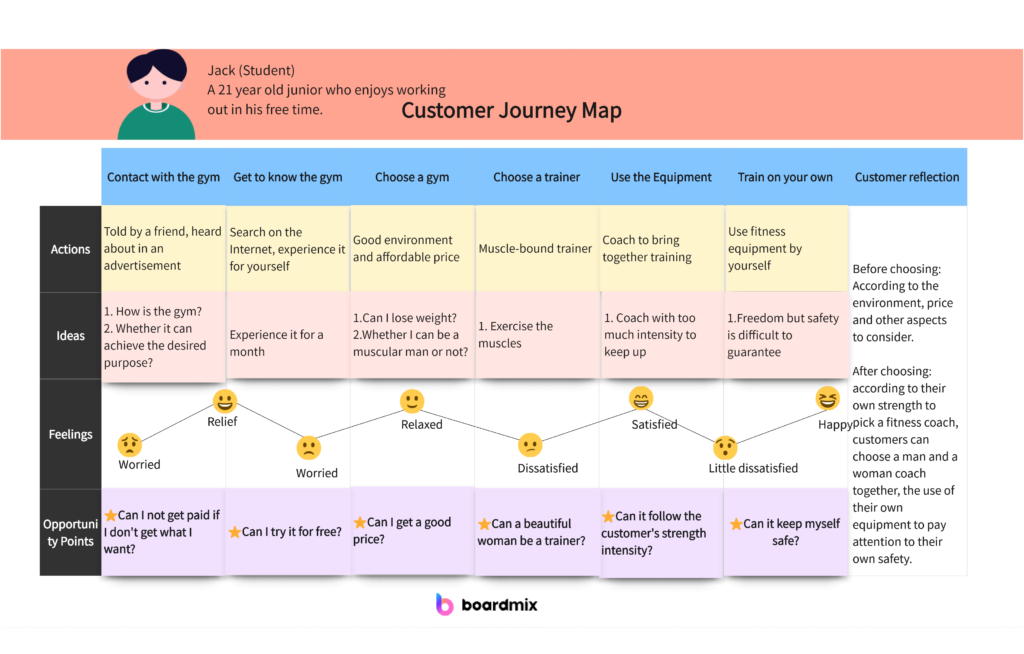
A Customer Journey Map is a tool that allows you to understand the feelings, motivations, and experiences of a student during their interactions with your school. By creating a Customer Journey Map in a language school, you can better plan your strategy to influence customer satisfaction and build long-term relationships with them.
What will you find in this article?
- What is a Customer Journey Map?
- Why is the Customer Journey Map important for language schools?
- Stages of the Customer Journey in a language school
- How to create a Customer Journey Map? Step by step
- Summary – Customer Journey Map in a language school
What is a Customer Journey Map?
Have you ever wondered how the quality of service, the behavior of instructors, and even the decor of classrooms affect your students’ satisfaction with the course they have taken? In today’s saturated language school market, managing customer experiences is the key to success.
Research confirms that a customer is willing to pay more for a product in a store where they had a positive experience than to buy it cheaper where, for example, the interaction with customer service was unpleasant. The same applies to language schools. All experiences that a student has in contact with your language school matter, from the moment of the first touchpoint, through their engagement, to long-term collaboration.
A Customer Journey Map (CJM) is a visual representation of the process a customer goes through when interacting with your brand. CJM helps you understand what experiences accompany the customer at each stage of their interaction with your school. This allows you to identify barriers, improve processes, and create more engaging experiences.
Why is the Customer Journey Map important for language schools?
By building your own journey map, you create a strategy for managing customer relationships – all so that they feel good in your school and are eager to return. Remember, by improving customer satisfaction, the sales index increases. The map will allow you to define the basic requirements for your school (skills, quality of teaching, price, use of technology), highlighting those areas you still need to work on and those that are valued by students. That’s why the main goal of the map is to discover the most important factors from the customers’ point of view that will make them remain loyal to your school.
TIP: A Customer Journey Map can take various forms (sticky notes, drawings, slogans). However, the most important thing is that the entire team is involved in its creation – employees in various positions. It may turn out that the methodologist and instructor perceive communication with customers differently. The map is precisely for understanding the problems of the students equally and developing methods to solve them together.
In summary, a Customer Journey Map in a language school allows you to:
- Increase customer satisfaction by better tailoring the offer to their needs.
- Identify pain points in recruitment, service, and teaching processes.
- Build customer loyalty, which translates into referrals and higher retention.
- Optimize marketing and sales, by focusing on channels that bring the best results.
Example: If you notice that many potential students drop out at the stage of filling out the application form, you can simplify this process, thereby increasing the number of enrollments. Learn how the LangLion Platform can streamline the management of your language school!
Stages of the Customer Journey in a language school
Every customer journey consists of several key stages. In the case of a language school, they might look like this:
- Awareness: the customer learns about the existence of your school through advertisements, social media, referrals.
✔︎ Points of contact with your school: advertising campaigns, Facebook posts, blog articles, Google listing. - Consideration: the client compares your offer with the competition.
✔︎ Points of contact with your school: student reviews, information on the website, social media. - Purchase: the client decides to enroll in a course.
✔︎ Points of contact with your school: intuitive enrollment system, support and assistance from the school in case of questions. - Experience: the client participates in courses and evaluates the quality of teaching.
✔︎ Points of contact with your school: instructors, administration, educational platforms. - Loyalty: the client recommends your school to others or returns for additional courses.
✔︎ Point of contact with your school: loyalty programs, satisfaction surveys.
How to create a Customer Journey Map? Step by step
At the beginning of creating a map, gather all the information you have managed to collect about your clients so far. This can include data from your website or social media channels, satisfaction surveys, complaints, and positive reviews about the school.
To create a Customer Journey Map, you should remember the 7 elements that form it:
- Personas: identify categories of your clients (parent, child under 10 years old, corporate executive) who illustrate different needs, feelings, opinions, and expectations. See how to build them in this article.
- Customer goals: focus on what goals drive students at each stage of their experience.
- Emotions: use different colors, styles, graphics, and emojis to reflect the client’s mood at various stages of their journey (you can show this, for example, through peaks and valleys).
- Touchpoints: list all the places where a client interacts with your school in sequence (through marketing, the website, phone, or in person) – even those you cannot control.
- Moments of truth: some interactions have a greater impact on the client’s experience than others (e.g., a student called the school three times and no one answered the phone). Don’t hesitate to highlight „critical moments.” Learn how to build long-term relationships with students through effective customer service in a language school.
- Promises: evaluate how well your language school delivers on its promises – is it really inexpensive? Can you learn to speak English in two weeks? Analyze how this affects customer disappointment or loyalty.
- Time: measure the duration of the client’s experiences. Is a typical phone call 30 seconds or 10 minutes? Does the decision to enroll in a course take 20 minutes or a month?
TIP: Supplement the journey map with customer quotes that reflect their experiences with your school. Additionally, try to create a mind map for potential clients, those who have not yet decided to take a course with you.
The final step is drawing a map that gathers the most important information. Remember, from your school’s perspective, the so-called moments of truth are the most important. Below we present a template that will help you compile your thoughts comprehensively.
Boardmix explained this brilliantly on his blog.

Summary – Customer Journey Map in a language school
A Customer Journey Map is an incredibly useful tool that helps better understand the needs of customers and improve their experiences at every stage of their journey. Remember, the key to success is not only creating the map but also regularly updating it and implementing improvements based on the collected data. This way, your language school can dynamically grow in the competitive educational market.
If you want to better understand your students, their needs, and learn how they evaluate your school, check our post: NPS, how to survey customer satisfaction with a single indicator!
